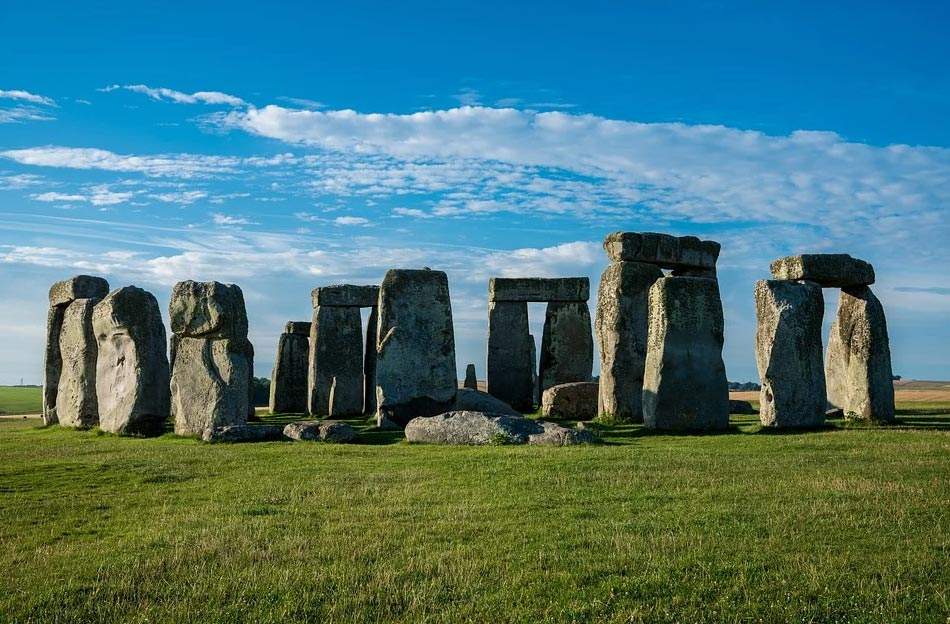According to British archaeologist Mike Parker Pearson, a prehistory specialist at University College London, the Stonehenge stone circle was not originally located on the Salisbury Plain in Wiltshire, where we can admire it today. In fact: it was not even in England, but in Wales, 280 km west of where they are now. In fact, a study published just yesterday in the journal Antiquity at the University of Cambridge, with Parker Pearson as first signatory, announces the discovery of traces of a site almost identical in size to Stonehenge at the Waun Mawn site, which is located in the Preseli Hills area, the area from which the smaller stones used to build Stonehenge, the so-called bluestones, came. As early as the 1920s the provenance of the bluestones was understood, while for the larger ones, called sarsen, confirmation came only last year: these would come from the Marlborough Downs area, about thirty kilometers from Stonehenge).
According to the article, ancient Britons would have built a monument almost identical to the one we can observe today right in Wales, and then “moved” it to southwestern England. In fact, there were already theories that the Stonehenge bluestones had been used before they were brought to the present site. Parker Pearson’s discovery now seems to confirm this: the original site, dating to about 3,000 B.C. (carbon 14 and thermally stimulated luminescence analyses were conducted on some of the materials found in the excavation to learn about a possible date), was in fact about five kilometers away from the quarries from which the bluestones came, had the same diameter as the Stonehenge circle, and was oriented in the same way. To formulate this theory, the materials found at the two sites were studied, investigations were made of the soil clods left by the removed stones, as well as the tools found at the Waun Mawn site (a flint scraper, an additional flint fragment, and a worked sandstone disk).
Parker Pearson’s discovery goes back a long way: in 2015, in fact, in the quarries of Carn Goedog and Craig Rhos-y-felin, Wales, the archaeologist and his team had found indentations in the rock walls that matched the shape and size of the Stonehenge bluestones, and even then it was hypothesized that the stone circle had originally been raised in Wales. Further examination (dates had been conducted on some walnut shells and the remains of ancient bonfires, the traces left by ancient quarrymen, to see if the origin of the excavation was compatible with the dating of Stonehenge, and it was found that the bluestones had been quarried about four hundred years before Stonehenge was built) brought new confirmation. The discovery of the rim tracks now seems to further support this theory. The bluestones have thus traveled nearly 300 kilometers, along the route on which the A40 highway connecting London to Wales was built in the modern age. They are not as large as the sarsen quarried near Stonehenge, but they are still objects weighing as much as a car, not easy for a prehistoric people to transport.
So there is some truth in the ancient legend, reported by Godfrey of Monmouth, a historian and writer who lived in 12th-century England, that Stonehenge is owed to wizard Merlin, who allegedly took men with him to Ireland to take possession of a magical circle of stones called “the Giants’ Dance” and rebuild it in England. The real story may be less magical, but it is certainly still very fascinating, not least because it is about the meeting of different cultures, which found a common terren in the Salisbury Plain.
“In conclusion,” the study reads in fact, “it appears that Stonehenge was built, in part or in whole, by Neolithic migrants from Wales, who brought their monuments with them as a physical manifestation of their ancient identity, so as to recreate a similar one in the Salisbury Plain. The first phase of Stonehenge construction also may have served to unite the peoples of southern Britain. The bluestones were brought to the land of the Sarsens and installed as a sacred axis mundi, where heaven and earth were at the center of a vision of cosmic harmony, and where peoples of different cultures and origins might have come together to build a collective monument and celebrate it.”
 |
| Stonehenge built by migrants from Wales: identical site discovered in England |
Warning: the translation into English of the original Italian article was created using automatic tools. We undertake to review all articles, but we do not guarantee the total absence of inaccuracies in the translation due to the program. You can find the original by clicking on the ITA button. If you find any mistake,please contact us.